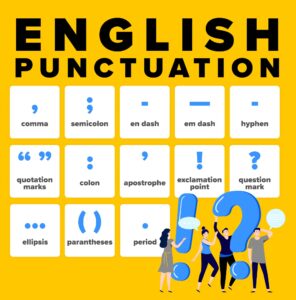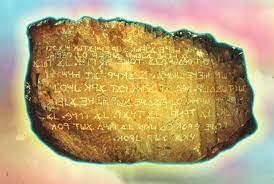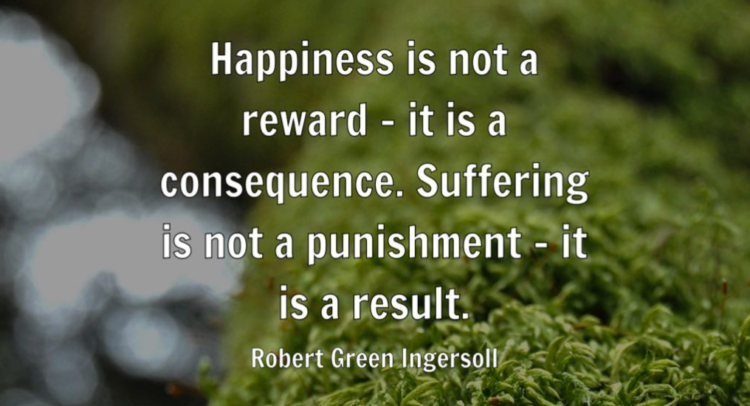Raboyseyee and Ladies,
As many know, the heylige Ois and eishes chayil just returned from a very enjoyable kosher river cruise that began and ended in Amsterdam. Aside from meeting many and making some new friends, a highlight that requires a special edition is in the works; stay tuned. In the meantime, a shoutout to the organizers and staff -including those in charge of programing, food, and kashrus of the boat. Find them here for future trips. https://kosherrivercruise.com/

Be Happy, or Be Punished Severely
Shoin, though Rosh Hashono is still two weeks away -mamish, one can feel the holiday spirit in the air, it’s quickly approaching. Daily email reminders about seat reservations, and more importantly, bringing our accounts up to date, suggest that it’s even closer. No money, no seat? Is that what the RBSO wants?
At least two shuls the Ois belongs but very rarely steps foot into, are calling to find out if the seats will be occupied; most are happy to hear that my permanent seat will be vacant; they smell additional revenues. The annual big Yom Kippur appeal is about to be unveiled. In yet another sign -and as we have mentioned in the past- the new 5784 Hebrew calendars and solicitation envelopes are beginning to pour in. And just when many thought they stopped printing calendars, this week the Ois found four of them his overstuffed mail slot upon his return from a trip to the Netherlands. More on the kosher riverboats experience and some of the amazing people he met, still to come. What he also found was a dozen or so solicitations from myriad organizations -mostly out of Israel- though kimat all had Brooklyn mailing addresses. Many were addressed to his parents Jakob and Rose Grossman who are both deceased about eighteen years. Of course, we all believe in ‘tichiyas hameysem -resurrection of the dead- but is it dependent on their check writing so many years later?
Let’s learn some parsha: Shoin: after bombarding the Yiddin with 74 mitzvis in last week’s parsha which included Toirah sanctioned awards for the nebech tired and in heat battlefield soldier -and thankful that Rabbi Stuart Weiss, the program’s in-house rabbi did not review each and every one of the 74 mitzvis -he did threaten a few times- during his sermons, this week, Moishe is just about done. Extending the davening and keeping people in shul when kiddish awaits -notwithstanding that breakfast was just served moments earlier- can be dangerous to a speaker’s health.
Approximately 605 mitzvis have already been delivered, and with four parshas to go and but 613 mitzvis in total, Moishe doesn’t have many left to teach. He’s also down to his own last days on this earth and will, in Parshas Ki Sovoy, begin the last of his three speeches, this one a long one that will take us to the end of his life. Moishe remains totally exasperated with the Yiddin and cannot make up his mind about how to get them to follow the RBSO, to be good Jews. He has tried every trick in the book. In the last few weeks, he’s bribed and threatened them, used the proverbial stick and honey routine, but he is seemingly not yet tzifridein (happy). This week, he takes out the proverbial stick. A few of my yeshiva rebbes did -or tried a similar trick with theirs, if you chap. He will warn the Yiddin of 98 different potential curses coming their way for wayward behavior towards the RBSO. The list includes hemorrhoids, say it’s not so. Check out last year’s heylige review on this parsha for more on hemorrhoids and other such zachin. Moishe is on a roll, and holds little back. It’s quite shreklich (OMG).

He begins -as he has in the past- with promises of a few brochos (blessings) for good behavior. Immediately thereafter, he will spell out -in very gory detail- the threats of unimaginable punishments to be meted out to those who brazenly refuse to observe the Toirah’s laws and the terrible calamities destined to befall the errant people -a whopping eye opening 98 curses in all. Let’s not forget that the RBSO had already foretold of 49 seemingly other curses back in parshas Bechukosai. Thankfully, we have long forgotten those.
In fact, a closer examination of the potential risk/reward ratios reveals that the curses coming our way have the brochos outnumbered 5-1. Better odds can be found at most casinos. We have previously covered the Toichocho (rebukes) and some of the midrashic interpretations of why they were given and a possible antidote. You can find these at oisvorfer.com.
As you know from previous review of this parsha, Ki Sovoy is not for the faint of heart. As with potential side effects of many medications, the paying attention in shul, or learning this parsha on your own, can cause great risk to your mind, body and soul. You might suffer from night sweats, bed-wetting, and thoughts about joining another less punitive religion. And if you feel like skipping shul or just talking throughout the entire laining, you won’t be alone.
Is this a religion we should stick with? Is this a religion potential converts should be attracted to? Why not stick with one where one can chant a few hail-Mary’s’ and ask forgiveness from the father who mistama himself needs more than a few to atone for his own nefarious activities? Potential converts should explore one that promises a few meydlich for good behavior, maybe a few dozen, or as many as 70 virgins, ver veyst?
Yet, we Yiddin stick with a religion where Moishe delineates the full smorgasbord of 98 curses to befall the Yiddin should they stray from the RBSO. Illness, famine, poverty, and exile are the best of the bunch. And the worst of all sins the Yiddin could violate? Says Moishe “because you did not serve Hashem, your G-d, with happiness and with gladness of heart, when [you had] most of everything.” (Devorim 28:47). What’s the difference between “happiness and gladness of heart?” What does joy have to do with it? Why is the lack of joy so giferlich? Don’t we all know people -ourselves included- who perform some mitzvis regularly without much joy? Is that so giferlich to bring about 98 curses. What’s pshat? Such punishment for so tiny an infraction?
Says the Medrish: one of the reasons the heylige Toirah states why we will receive the curses of the Toichocho is because we did not serve Hashem, your G-d, amid gladness and goodness of heart when everything was abundant. The direct quote is, of course, from the heylige Toirah (Devorim 28:47, if you don’t believe me) “tachas asher lo avadata es HaShem Elokecha bisimcha uvituv leivav meirov kol”. That’s why we’re getting these and many other curses, oy vey!! Can you imagine that all this Toichocho and the curses attached to them are coming our way because we weren’t happy? Because we didn’t serve the RBSO with gladness and goodness? Can you imagine what’s coming your way when the RBSO finds out about your wayward ways and how glad and happy you were -mamish- while performing them? Oy vey! When He hears about how you have been oiver (violated) on kimat (almost) every single loi sah-say (thou shall not dos) in the Toirah, some multiple times -some since high school, loi olaynu? You’re done, finished, kaput! Help please!
Seemingly, the proper performance of mitzvis requires that we be happy during the performance, if you chap. And just going through the motions, is epes not enough, not acceptable to the RBSO, and for those who do just that, the rebukes and other zachen that await you are not fun. All these acts must also be infused with happiness, joy, and distinctly positive energy. Grada this sounds gantz gishmak (quite pleasing) if you chap; efsher time for a shmuz with the eishes chayil?
Nu, the heylige Ois once heard from his Rebbe in between beatings, who heard it from another source, who efsher made it up, that pshat is like this: When a person performs a mitzvah and is happy about it, it becomes clear that he perceives that the mitzvah is being done not for the RBSO’s benefit, but for his own. And whenever we do something or anything for our own good, which avada gives us benefit and pleasure, we are happy. Shoin! Understanding that mitzvis go into our proverbial bank accounts (to be offset against the many horrendous things we do) invariably increases our zeal for their performance, and our attitude when performing them. Said The Kotzker (among the leading Chassidic Rebbes of the mid-19th century) azoy: the words of the Toirah must be read with punctuation and vus meynt dos (what does that mean)? We need to insert a comma before the word, “happily.” And with that comma, the true meaning of the verse in which Moishe tells us that we will be severely punished because we performed without happiness, looks epes a shtikel different. Let’s see. “Because you did not serve your G-d, happily.” In other words, not only did we reject the RBSO’s ways; we did so happily. We were naughty and bad and enjoyed being bad. Avada for such chutzpa, we deserve to be afflicted with the 98 curses. Gishmak mamish!

The good news is that Yom Kippur is just around the corner; the RBSO will surely forgive you after you plead guilty with an explanation and promise to pay attention next year. Of course, you won’t; the road to every successful Yom Kippur campaign is paved with yearly broken promises; it’s what makes Yom Kippur more relevant.
So happens that besides the dreaded Toichocho, the parsha has a few other pearls and mitzvis to mine. Some say it’s six. This year we will skip ahead to one found later, towards the very end. To chap it, we must begin by quoting a few pisukim of the heylige Toirah (Devorim 27: 1-6) which says azoy:
“On the day that you cross the Jordan to the land which the Lord your G-d gives you, you shall set up great stones and plaster them with lime. And you shall write upon them all the words of this Toirah…you shall set up these stones, which I command you this day, in Mount Ebal. There you shall build an altar unto the Lord your G-d, an altar of stones; you shall lift no iron tool upon them. You shall build the altar of the Lord your G-d of unhewn stones; and you shall offer burnt-offerings on it unto the Lord your G-d. And you shall write upon the stones all the words of this law very plainly.” Shoin: Long before Art Scroll envisioned the Stone Edition of the Chumash (Chumish in yeshiva reydt or language), stones seemingly played a significant part in the heylige Toirah. What exactly were the Yiddin to do, how many stones were involved, where they come from, and many more questions are raised by these few pisukim. And as you can only imagine, these passages were the subject of many discussions and machloikes between many in the heylige Gemora and other places. What were they arguing about? About real pshat in the instructions which can of course lead to some confusion and many interpretations. Welcome to the heylige Toirah. Is it a wonder some say it has 70 faces?
And because you never knew any of this, we will dedicate a page or two to enlightening you and efsher enhancing your Shabbis tish. Seemingly, Moishe and the elders commanded the people, that when they crossed the Jordan River (Yehoshua would lead them following Moishe’s passing), the very first mitzvah they were to perform was to pick up twelve large stones from the river bed (one stone corresponding to each tribe) and carry them into the Promised Land. Does everyone agree that there were 12 stones? Of course not! And says the heylige Gemora (Soitah 34a) azoy: there were three sets of stones, each consisting of twelve stones, and not just one. Shoin, whether there was one large stone or 12, or 36, ver veyst? Let’s go veyter.
Once there, they were to take them to Har Gerizim and Har Eival, two mountain tops. Next: they were to construct a Mizbei’ach (altar) with the stones and lime them. And then? They were to write or inscribe them. Write what? “The Yiddin were here in 2488”? Let’s see those words again: the instructions were “and write on them all the words of this Toirah,” ober which words? All the words? Some words? Which specific words? How many words and just how many could fit onto 2 or even 36 stones? How large were the stones and what were they using for writing implements? How were such large stones transported? So many excellent kashas, none of which you likely recall learning answers to. Let the heylige Ois enlighten you with a few potential answers. Of-course these are only potential answers because few agree on any one detail, let alone pshat. Welcome to Toirah Learning 101.

Nu, some are of the opinion that the entire heylige Toirah was to be written or etched into the stones. Mamish? Is that possible? Some say that’s nothing! According to others, the entire heylige Toirah -in all 70 languages of the people- needed to be inscribed so that all of mankind -and maybe also womankind- would be able to read the stones. In how many languages? Some say 70 and some say 71. Why these numbers?
Nu, efsher you recall that the RBSO – following the Tower of Bavel incident- dispersed the people into 70 nations, each with their own unique language. And the 71st? That would be loshoin koidesh (holy script, our very own language). Which of the Yiddin knew how to speak and write 70 languages? Ver veyst? Of course, these instructions did not sit well with other exegetes who asked how that was possible? How could 12 or 36 stones fit all this information? Not to worry because says the Ramban azoy: One possibility was that only the 613 mitzvis were written, not the entire Toirah script. Gone were the gevaldige storylines we learned in Sefer Bereishis, the scandals involving the holy shevotim, and myriad other topics that keep us interested in learning the heylige Toirah. Stones were to be used for the hard facts only, the actual commandments. Another view suggests that taka the entire Toirah, from the first letter in Sefer Bereishis to the very last in Sefer Devorim, was recorded but how? Is that your business? If the RBSO said to do it, mistama He had a plan, even if that plan was miracle dependent. Can the RBSO not perform miracles? Does He keep you around from year to year despite your despicable behavior and even less? Is that not a miracle?
What’s taka pshat? Either the stones were enormous and avada we can chap that big stones are sometime better than little stones, and of course helpful at times as we go through life, if you chap. Or, it was a neys mamish (miraculous scribal feat) that allowed this to happen? Why not? Didn’t the RBSO perform other miracles that you seem to accept without questioning? Veyter! Were you not impressed when the sea split drowning the Egyptians? How about revelation? And the daily mun bread? The list goes on.
Why would the RBSO require that His Toirah be etched into stone in 70 or 71 languages? How long would that take? Who knew these languages and which of the non-Jewish nations would care about the RBSO’s Toirah? Ver veyst? Moreover, the Yiddin have yet to agree on one unified translation of the heylige Toirah; how were they going to etch it into 70 languages? Ver veyst? In any event, the heylige Gemora does present one logical argument on how this could have happened.

Says Reb Saadya Ga’on -as mentioned above- that only the Taryag Mitzvos (613 commandments) were written on the stones. Ober says the Toirah Temimah azoy: only the 10 commandments were written down. Some say that only the 98 “curses” of the toichoco (rebuke) -mamish words from our parsha- is what was written on the stones. Ober said the Kisav Veha’Kabala that only the Shema prayer was written in stone. Which was it, ver veyst? And said Don Yitzchak Abarbanel, (Commentary on Sefer Devorim, 252b) azoy: all of, and only Sefer Devorim was inscribed onto the stones. Shoin, is it a wonder that Yiddin don’t agree on anything? Our rich history suggests this fete to be imoossible. If Yiddin agreeing on something is a condition precedent to the coming of the Moshiach, we’re in for a very long haul.
How many stones were there? Says the heylige Gemora (Soitah 34a) azoy: there were taka three sets of stones, each consisting of twelve stones, and not just one. That’s 36 stones. The first set contained the words of the Toirah in all languages and was erected by Moishe in Arvos Moi’av (plains of Moiav) when he re-established the covenant that the Yiddin had broken and nullified with the eygel (golden calf) incident. The second set, at the behest of Yehoshua, were placed in the Yarden (Jordan River) itself as the Yiddin crossed over. For what purpose you may be wondering? Says Rabeinu Bachye, the function of this set was for the Kohanim (priests) who stood their ground holding the Aron whilst the people crossed, until the water returned to its original course, to stand on, to avoid having to stand in the mud. This makes it unlikely for the Toirah to have been written on them, though in any event, there is no indication that it was. Gishmak. And the third set was initially erected on Har Eival in the form of a Mizbei’ach, as we explained, and then, after sacrificing on it, they took it apart and carried the stones to Gilgal, where they spent their first night in the holy land, and where they re-erected them. Got all that?
One Medrish will tell us that at least two miracles occurred in connection with these stones. Ershtens, both mountains, Har Gerizim and Har Eival were a distance of sixty Mil (one and a half days walking distance). Yet the Yiddin traveled there, set up the stones, wrote the entire Toirah on them in all seventy-one languages (70 plus the original Toirah language) and went through the entire ceremony described in this parshah, and returned, all before nightfall. Givaldig? But true? Ober, says the Ramban, based on his assumption that the stones were not that gigantic, azoy: the Yiddin were able to write the entire Toirah on them seventy-one times, with all the Tagin (crowns) and that was a miracle too. The bottom line? What really took place? of course, there is no consensus. How large were the stones? The heylige Gemora (Soitah 34a) tells us that the volume of each stone was forty Se’ah (one Amah by one Amah by three Amos. And how large is that? The measurement of a minimum size Mikvah.
And the final bottom line? In the end, we accept that if the RBSO ordered that His Toirah be etched into stone, be it on the original set which Moishe brought down with the Ten Commandments, or the second replacement set, following a shtikel debacle, or, on the 12 or 36 stones referenced in our parsha, there must be a good reason. Exactly what that reason was, is of course none of our business. During this time of year, it’s the RBSO asking questions about what we’ve been doing with our stones, if you chap.
A gittin Shabbis
The Heylige Oisvorfer Ruv
Yitz Grossman
